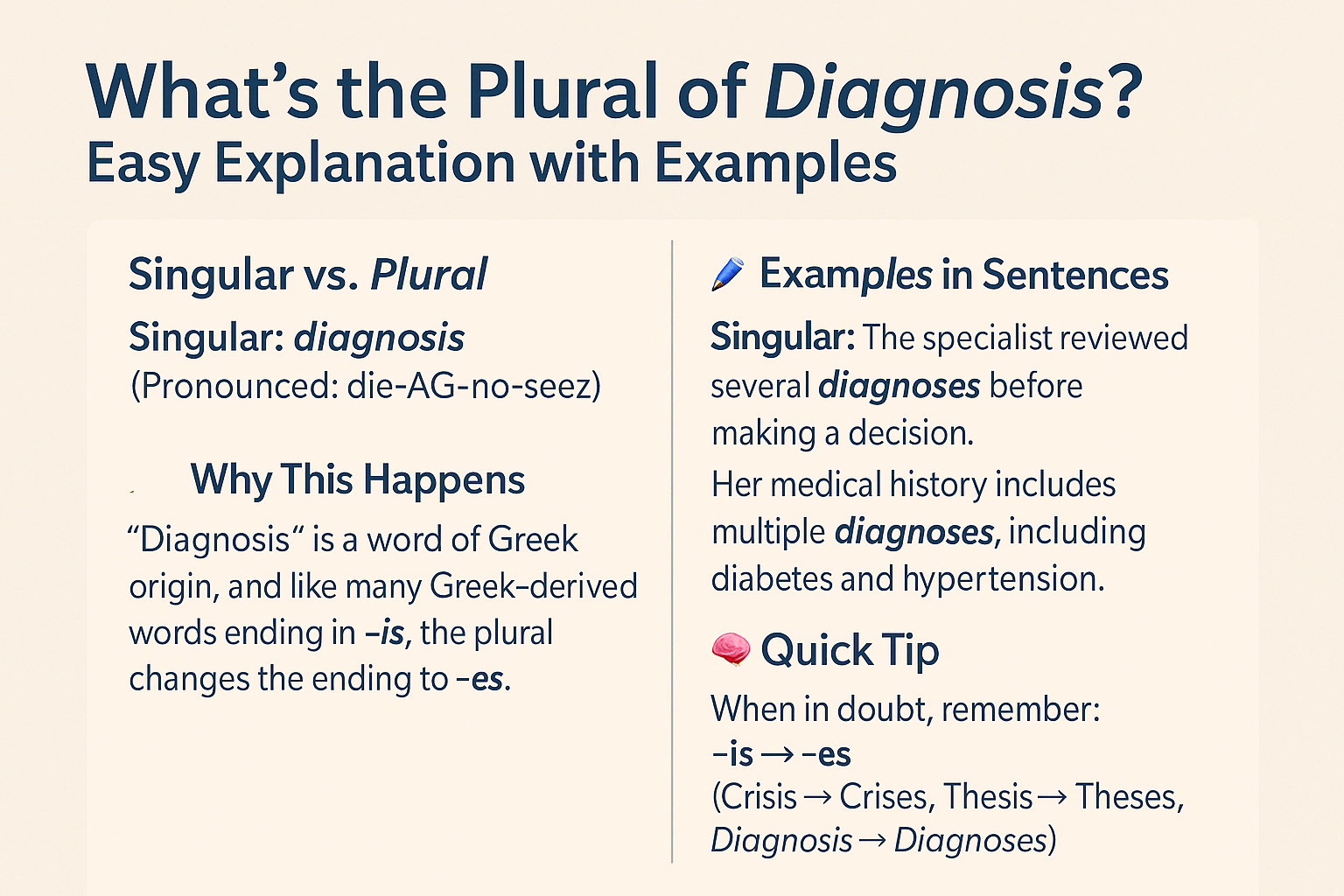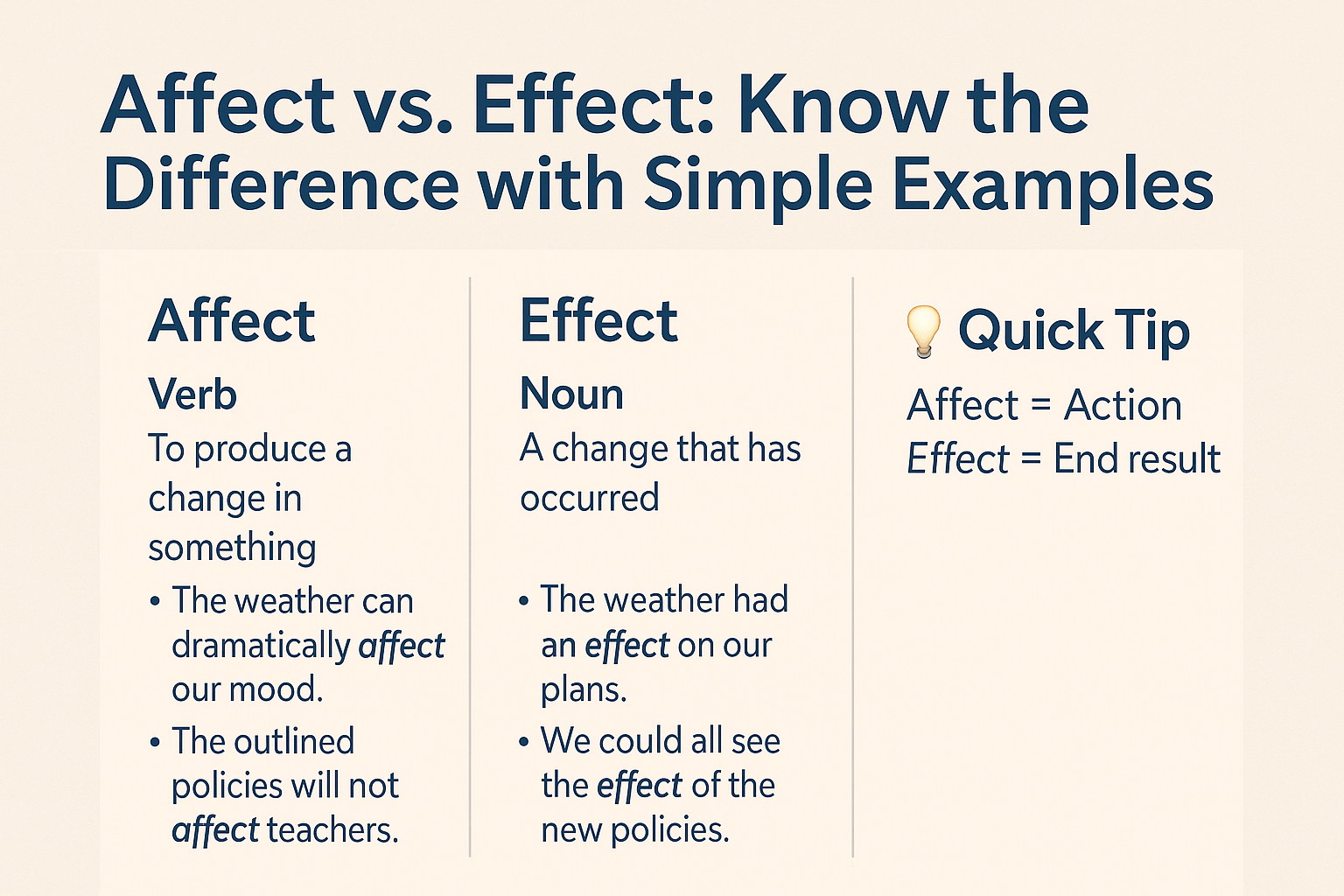
What’s the Plural of Diagnosis? Easy Explanation with Examples
If you’ve ever wondered whether it’s “diagnosises” or something else, you’re not alone. English can be tricky—especially when it borrows words from other languages. One such word is diagnosis. In this post, we’ll explain what the plural of diagnosis is, why it looks the way it does, and how to use it correctly with clear, simple examples.
So, What’s the Plural of Diagnosis?
The plural of diagnosis is diagnoses.
- Singular: diagnosis
- Plural: diagnoses
Why?
“Diagnosis” comes from Greek. In Greek, many singular nouns ending in -is change to -es in the plural. So instead of adding “-s” like in most English nouns, “diagnosis” becomes “diagnoses.”
This is similar to other Greek-origin words like:
- Crisis → Crises
- Analysis → Analyses
- Thesis → Theses
Pronunciation Tip
- Diagnosis: /ˌdaɪ.əɡˈnoʊ.sɪs/
- Diagnoses: /ˌdaɪ.əɡˈnoʊ.siːz/
Notice how the plural “diagnoses” ends with a “seez” sound, not “siss.”
Examples in Sentences
To understand the plural of diagnosis in context, let’s look at how both forms are used.
Using “Diagnosis” (Singular)
- The doctor gave me a diagnosis of seasonal allergies.
- Her diagnosis was quick and accurate.
- He was relieved when the diagnosis showed nothing serious.
Using “Diagnoses” (Plural)
- The clinic handles hundreds of diagnoses every year.
- Several diagnoses were considered before the final test.
- Miscommunication can often lead to incorrect diagnoses.
Common Mistakes to Avoid
❌ “Diagnosises”
Some people mistakenly try to make it plural by adding -es, like regular English nouns (e.g., bus → buses). But since “diagnosis” is of Greek origin, it doesn’t follow that rule.
❌ Using “Diagnosis” as a Plural
Another error is using “diagnosis” to refer to multiple conditions. Remember, one diagnosis = one medical conclusion. For more than one, you need “diagnoses.”
Why It Matters (Especially in Writing)
Whether you’re a student, healthcare professional, or just trying to write clearly, using the correct plural form shows attention to detail. It improves your communication, especially in:
- Academic writing
- Medical records or reports
- Formal discussions
- Blog posts and articles
Even outside of medicine, “diagnosis” is often used metaphorically (e.g., diagnosing problems in a system), and the plural still applies: diagnoses.
Quick Grammar Summary
| Form | Word | Use Case |
| Singular | Diagnosis | One medical or analytical result |
| Plural | Diagnoses | More than one diagnosis |
Fun Fact: What Does “Diagnosis” Mean?
A diagnosis is the identification of the nature and cause of a problem, most commonly related to health. However, it can also be used outside of the medical field.
Medical use:
- The doctor made a diagnosis of pneumonia.
Non-medical use:
- The technician gave a diagnosis of the computer’s issue.
And of course, if you’re referring to more than one? You’ll say:
- The doctors gave different diagnoses for similar symptoms.
- Multiple diagnoses helped narrow down the right treatment.
Final Thoughts
Now you know the answer to “What’s the plural of diagnosis?” — it’s diagnoses.
It’s a small change, but it makes a big difference in sounding polished and professional. Just remember: if the word ends in -sis and comes from Greek (like diagnosis, analysis, crisis), its plural usually ends in -ses.






